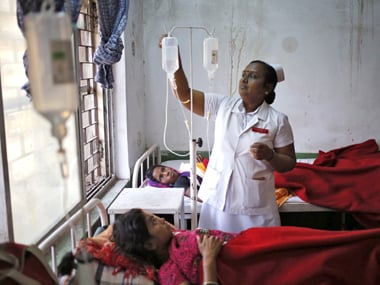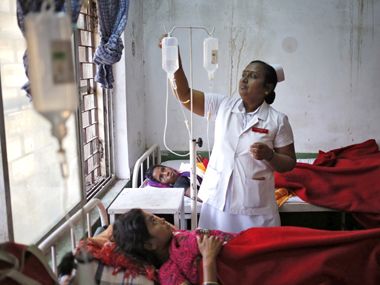There is one reform that is creeping up on us in the form of National Healthcare Policy 2015. The government has for the first time made a real effort to define the healthcare needs of the country. The policy will warm the hearts of several people who have been worrying about the absence of any coherent view on it. The UPA government had its healthcare policy dictated by the private sector. As a result, over the last 10 years cost of healthcare in the country has ballooned. It has driven families into poverty and for the first time a government admits that healthcare has driven people into poverty. NHP claims that 63 million people have been driven into poverty due to the high cost of healthcare that they had to bear as caregivers or suffering from a disease. India’s healthcare policy divided availability of healthcare and its cost as two different issues. When it is that the cost of healthcare has become so high that it is out reach for most Indians. Though, it might be available as it is so expensive, it is not even considered by large population especially for critical or life threatening illness. NHP 2015 also breaks down the divide between the urban and rural healthcare services. These are two different buckets and most of the government expenditure has gone into building a network for the rural areas. The UPA-2 announced a National Urban Health Mission in 2013 but did not allocate funds for it. Even though healthcare is an important area even new generation parties like Aam Aadmi Party has never made it a key plank. Now, with the NHP 2015, it is unlikely that any other party will be able to lay claim over this crucial piece. Here are nine strategic policy shifts in the NHP 2015: 1) Focus on the cost of care and financial protection is an important issue and one of the core pillars of the NHP 2015. It effectively shifts the issue from just availability to what is the cost of it and whether the people will be able to afford. One of the pitfalls of healthcare more than 80 percent shifting into private hands is that there has been no control over pricing or quality. NHP 2015 addresses the issue of quality directly and tries to deal with pricing in an indirect manner. [caption id=“attachment_2027013” align=“alignleft” width=“380”]  NHP 2015 also breaks down the divide between the urban and rural healthcare services. Reuters[/caption] 2) Sets an ambitious target of healthcare expenditure at 2.5 percent of the GDP. This is an important benchmark as currently the healthcare expenditure is just 1.04 percent of GDP. This is still lower than several developing countries including Thailand and Brazil but it is still important that the target is double of the current expenditure. 3) Cost of care or affordable healthcare is the focus of the new policy and it envisages using both private and public healthcare service provider to give this. NHP 2015 talks about a healthcare card for every family and does not discriminate based on income. This is an interesting shift as it is not only the poor who will get the healthcare card but every Indian citizen. It is almost like a right to access affordable healthcare. Though the policy does not mention anywhere healthcare as a right as it is silly idea to give ‘paper’ rights when you don’t have the infrastructure. Fundamentally, the NDA seems to be opposed to the idea of giving rights for the sake of giving. 4) A network of healthcare is expected with the lowest rung made up of healthcare and wellness centers. The current Asha network is expected to be supported, replicated in urban areas too with preventive healthcare centers. NHP 2015 does not mention how many such centres will be set up. The second rung is primary healthcare centers and then hospitals at district level. This is the structure in rural areas. The target is one bed for every 10,000 people in urban areas. 5) NHP 2015 envisages a shift from free healthcare to prepaid care. The concept being that the population will pay for this healthcare in the form of healthcare cess that will be levied like the education cess. A portion of the excise on cigarettes and liquor will also be converted to healthcare cess. This shift means that the citizens are already paying for the availability of healthcare. Therefore they should be provided universal access to free drugs and diagnostics. 6) NHP 2015 acknowledges that it is not possible to provide healthcare services through the public hospital facilities. Therefore, purchasing healthcare services from the private sector will be a crucial component of the universal access. This already exists in different form under ECHS and other services for government officials both retired and serving. NHP 2015 is extending this model for all citizens and this is the most ambitious part of the policy. As the policy framework does not lay down any budgetary estimates specifically for such a wide ranging option. 7) Quality of healthcare services varies widely as there is no regulatory control over them. All standards especially quality standards are voluntary in nature. NHP 2015 does not address this issue fully it says that the standards set by NABH and NABL both industry owned bodies will be made mandatory and leaves it at that. It talks about incentives for following standards but does not put down a regulatory structure to manage, control and ensure a consistency of quality across healthcare service providers. 8) NHP 2015 acknowledges the corporatisation of healthcare in India and sees the trend growing much faster in coming times. It sees the private healthcare sector growing seven times from $40 billion to $280 billion over the next five years. A lot of venture capital and private equity fund is moving into healthcare opportunity in India. The growth is expected to go from 14 % to 21% over the next decade NHP wants to leverage the for-profit model of healthcare service providers as part of the universal healthcare access. With such a large growth expected in healthcare services both quality, cost and availability has to be regulated. This is the area that NHP 2015 fails to adequately address. 9) NHP paper talks about the nexus of insurance companies and hospitals that have been milking government healthcare schemes, but does not suggest solutions to prevent it fully especially with universal healthcare being another massive insurance scheme buying services from private healthcare. In sum, this is the biggest and the most ambitious healthcare policy ever formulated. Now that the policy is open for public comments it is also open for dilutions of its objectives and goals. This is where the real rub lies how much will it get diluted from draft to final adoption. K Yatish Rajawat is a senior journalist based in Delhi. He tweets @yatishrajawat
This is the biggest and the most ambitious healthcare policy ever formulated
Advertisement
End of Article


)

)
)
)
)
)
)
)
)



